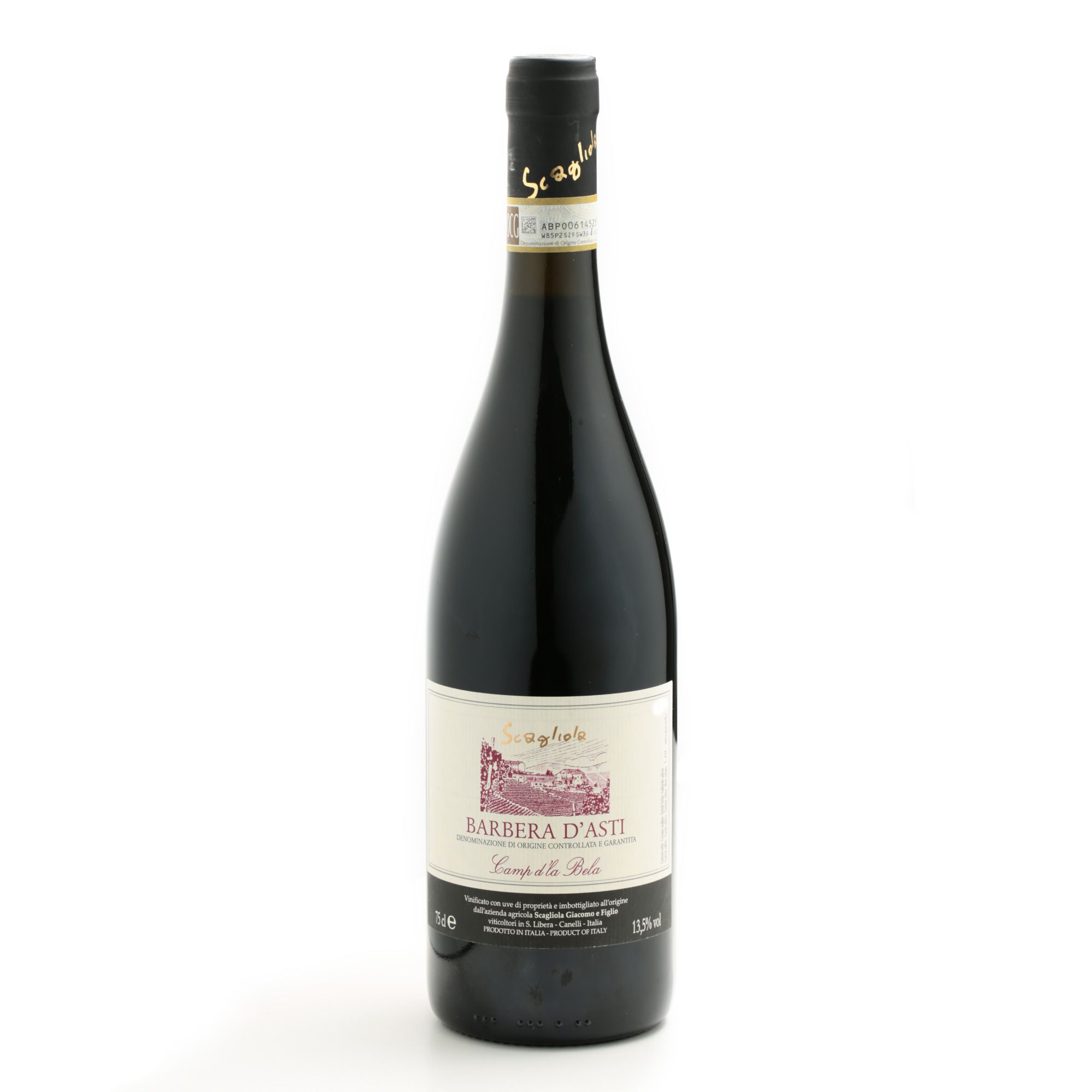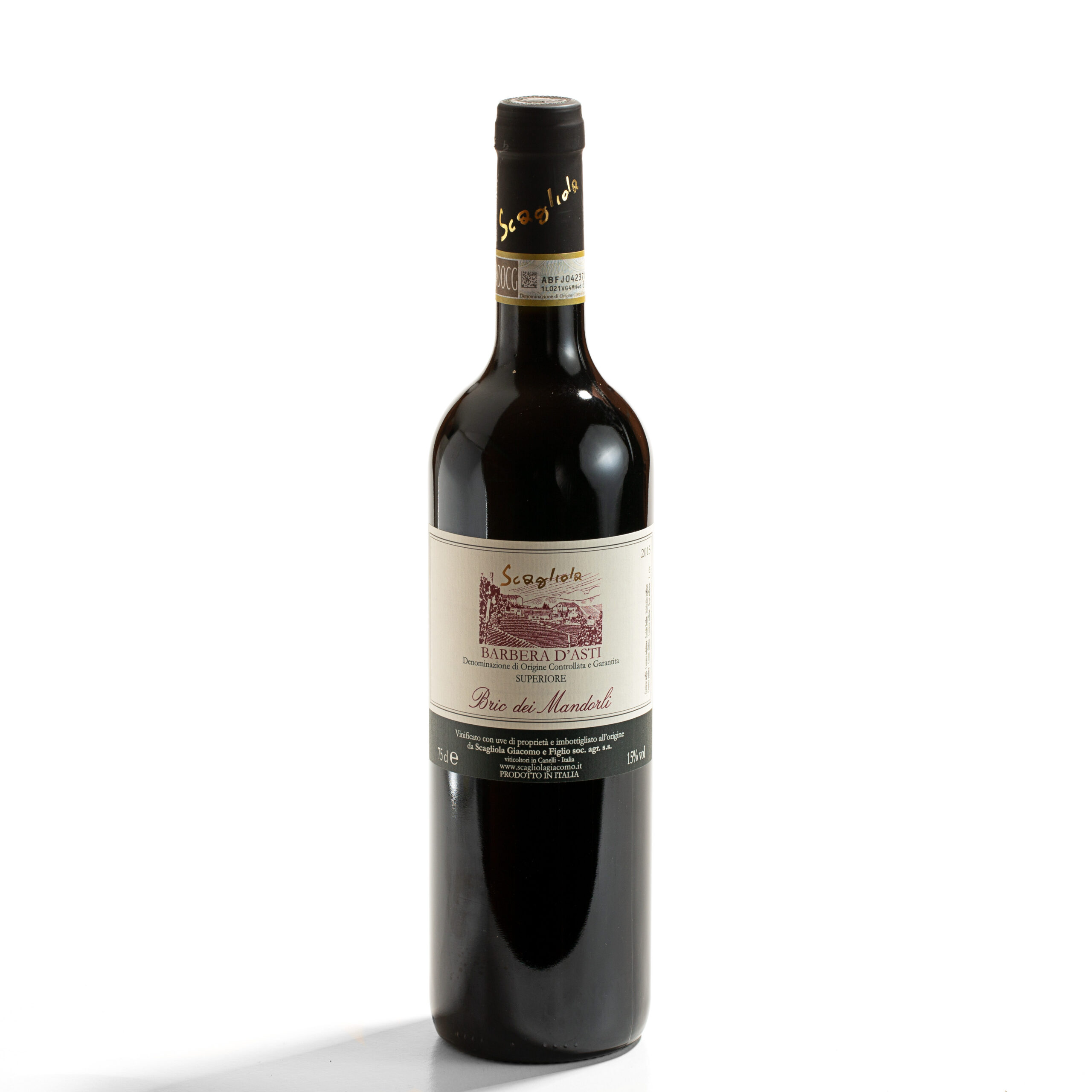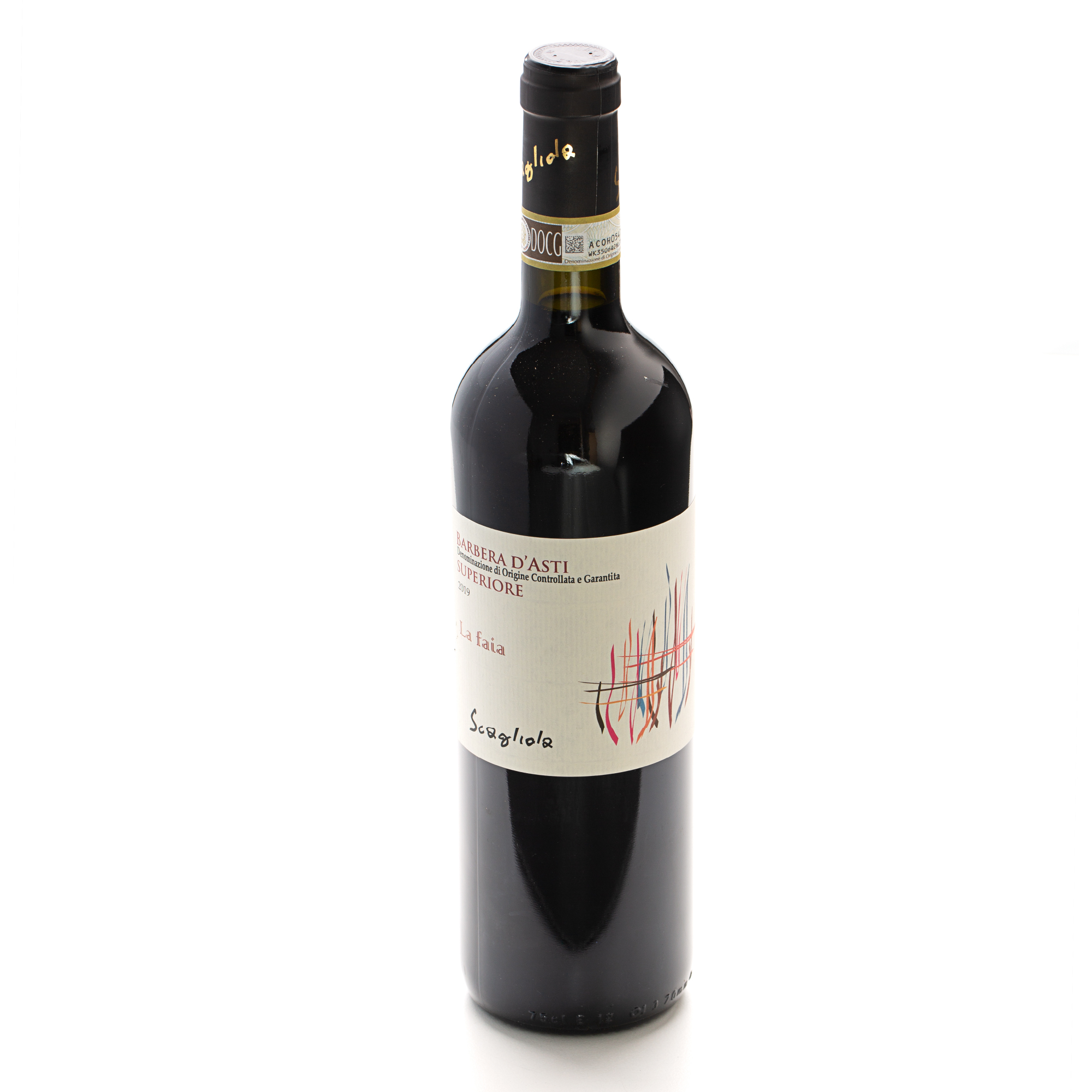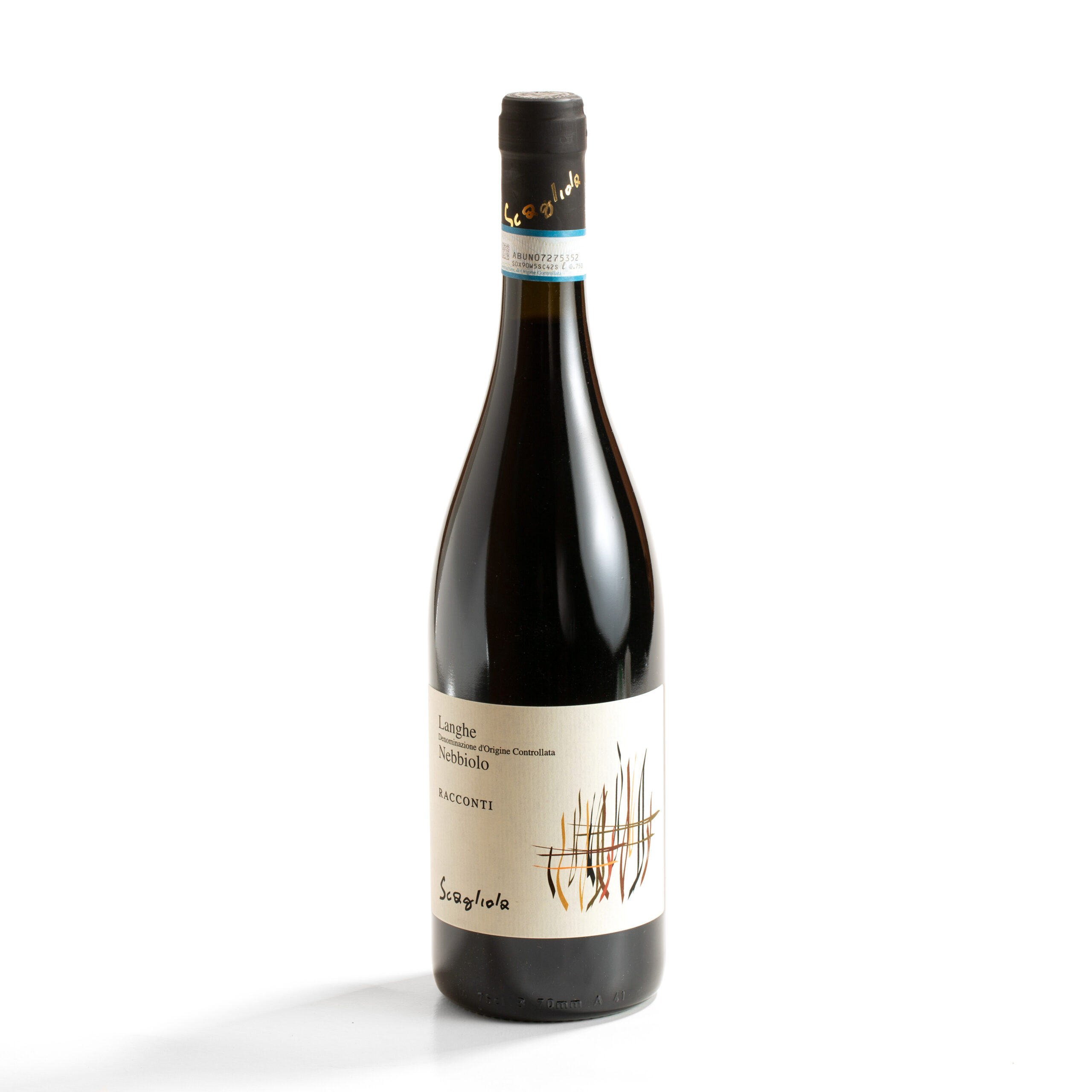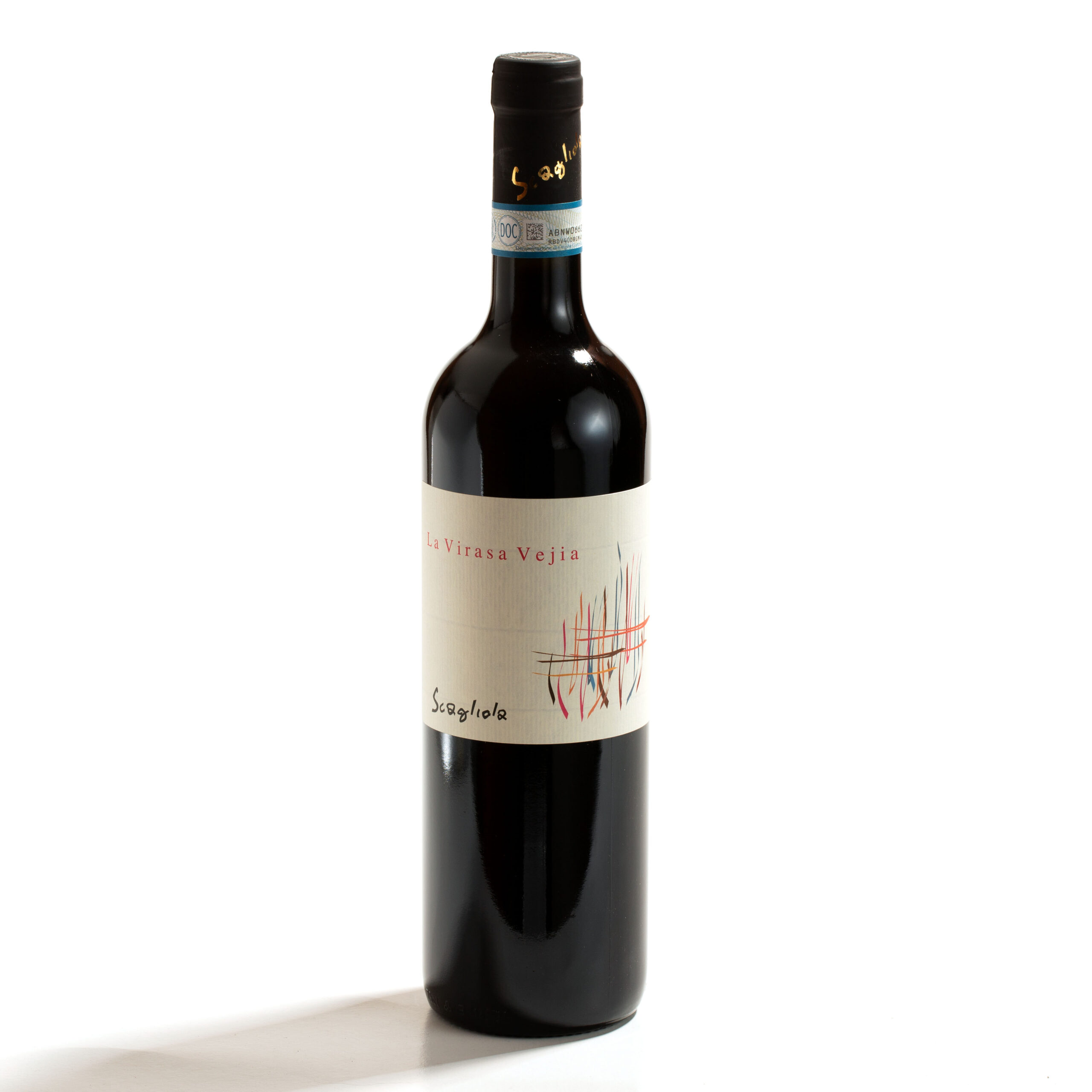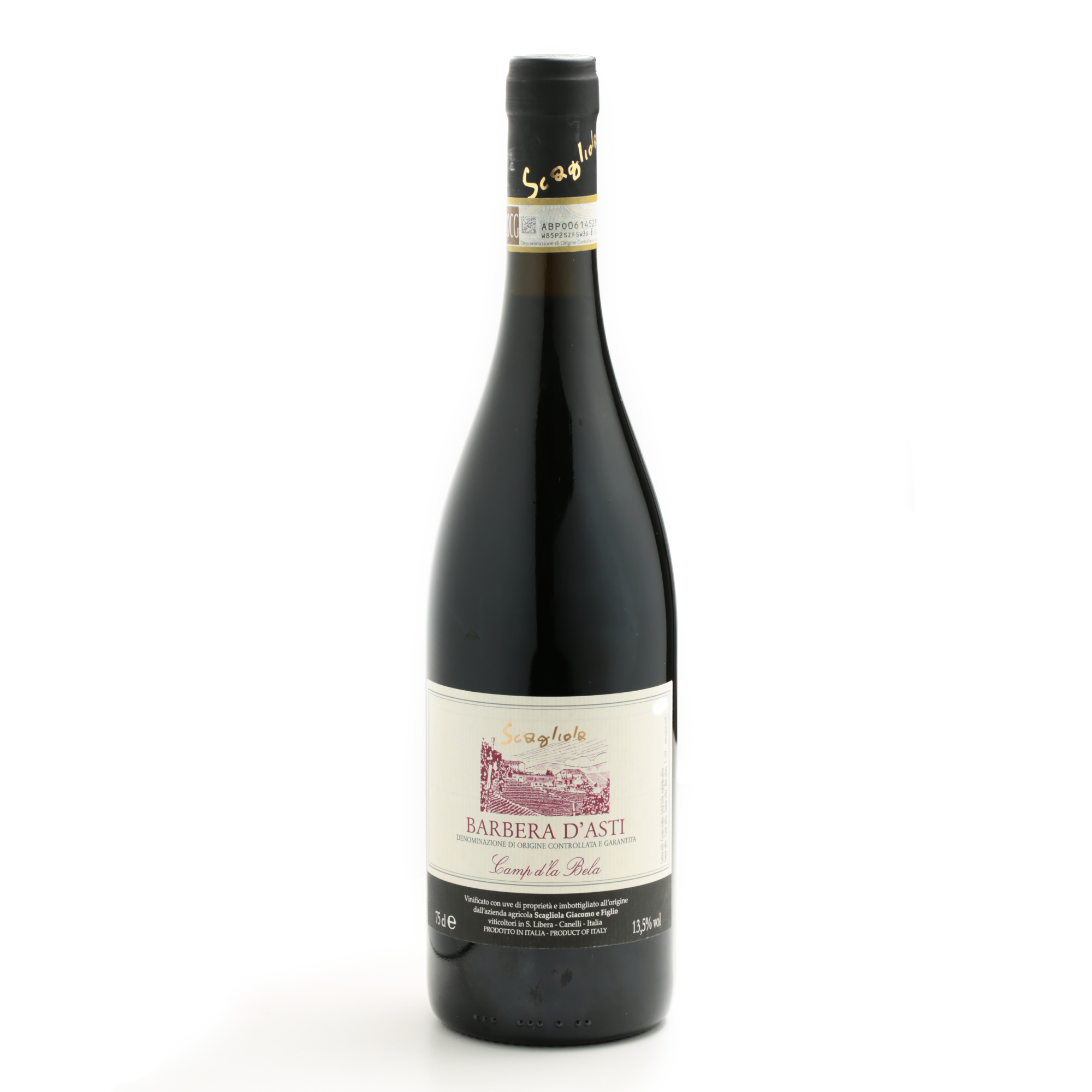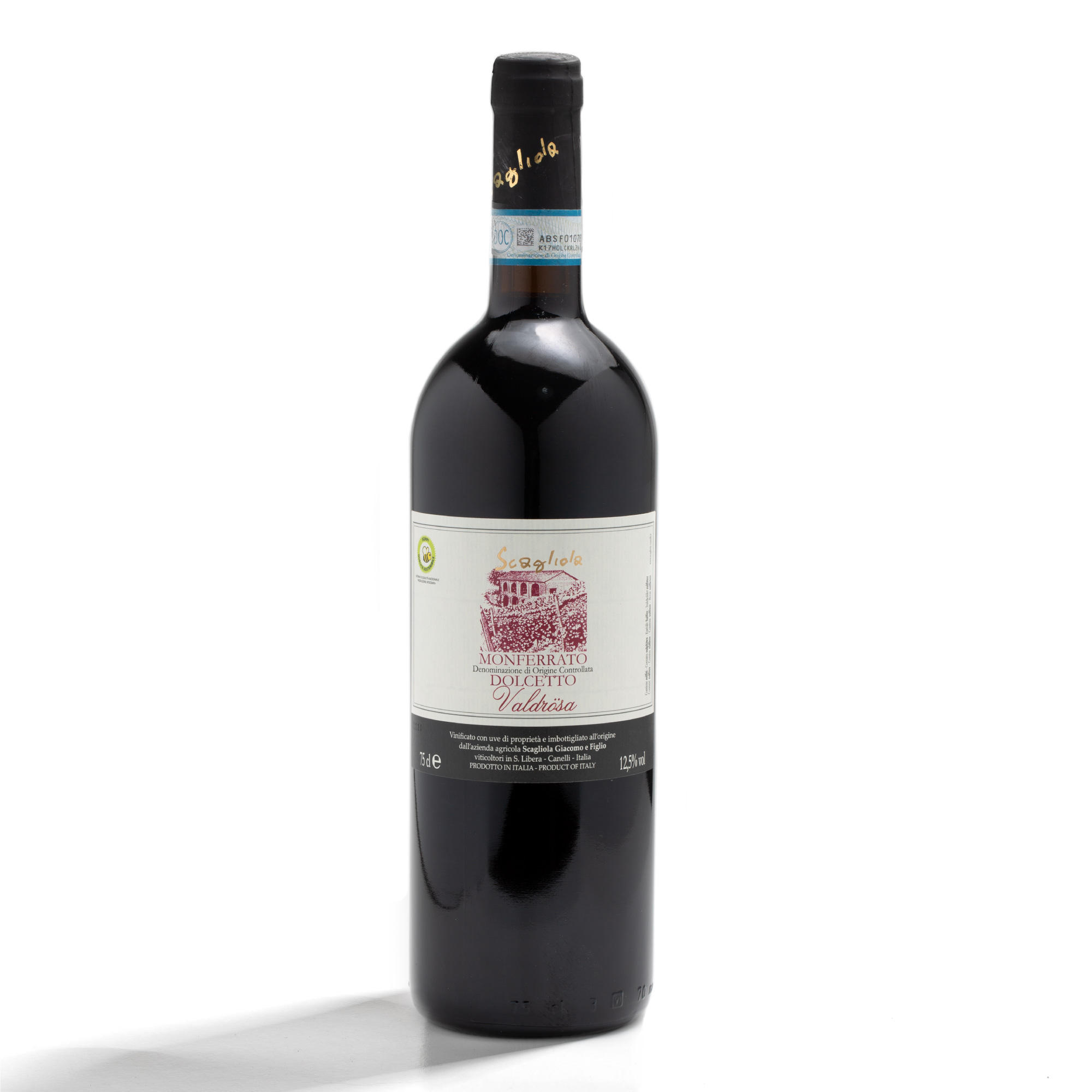Barbera d’Asti D.O.C.G. “Camp d’la Bela”
-
GrapeBarbera (100%)
-
SoilCharacterised by a mixed soil, clayish and calcareous, and low yields.
-
TrainingGuyot
-
HarvestManual harvesting in 20 kg cases. Harvest is performed when phenolic ripeness is reached (by the end of September/beginning of October)
-
RESA /HAAbout 9 tons
-
Alcohol13% vol.
-
Vinification
Vinification starts with soft pneumatic pressing, followed by traditional maceration with submerged cap until complete sugar fermentation; recurrent pumping-over is intially performed. The wine ages for about one year eclusively in steel tanks as to keep freshness and flavour. After bottling, the wine rests in the cellar for at least six months before selling.
-
Serving Temperature and food matching
18-20° C.
Thanks to its freshness it’s an excellent food wine, well suited to match any dish with a fat component. The Barbera d’Asti Camp d’la Bela finds a natural pairing in the dishes of the piedmontese culinary tradition, especially starters ( like veal with tuna sauce), as well as cold cuts and meat dishes (like braised and boiled meats). As for the traditional dishes, it’s an excellent match to bagna cauda and piedmontese mixed fry.
-
VitignoBarbera (100%)
-
SoilCharacterised by a mixed soil, clayish and calcareous, and low yields.
-
Forma di allevamentoGuyot
-
VendemmiaManual harvesting in 20 kg cases. Harvest is performed when phenolic ripeness is reached (by the end of September/beginning of October)
-
RESA /HAAbout 9 tons
-
Gradazione Alcolica13% vol.
-
Vinificazione
Vinification starts with soft pneumatic pressing, followed by traditional maceration with submerged cap until complete sugar fermentation; recurrent pumping-over is intially performed. The wine ages for about one year eclusively in steel tanks as to keep freshness and flavour. After bottling, the wine rests in the cellar for at least six months before selling.
-
Temperatura di servizio
18-20° C.
Thanks to its freshness it’s an excellent food wine, well suited to match any dish with a fat component. The Barbera d’Asti Camp d’la Bela finds a natural pairing in the dishes of the piedmontese culinary tradition, especially starters ( like veal with tuna sauce), as well as cold cuts and meat dishes (like braised and boiled meats). As for the traditional dishes, it’s an excellent match to bagna cauda and piedmontese mixed fry.
It might also interest you:


FEASR Fondo Europeo Agricolo per lo Sviluppo Rurale: L’Europa investe nelle zone rurali
-

La nostra azienda aderisce alla Misura 10.1.1 del PSR 2014-2020 della Regione Piemonte che finanzia la realizzazione delle tecniche di agricoltura integrata. La Misura 10.1.1 prevede il rispetto delle norme tecniche che regolamentano i trattamenti fitosanitari e le concimazioni dei nostri vigneti e terreni in conduzione. Programma di sviluppo rurale 2014-2020 Misura 10 - Pagamenti Agro-climatico Ambientali Sottomisura - 10.1.1 Produzione integrata Adesione alle tecniche di Produzione integrata

